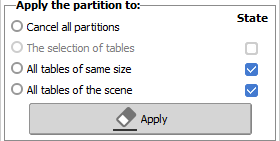|
<< Click to Display Table of Contents >> Partitioning to account for electrical shading losses |
  
|
|
<< Click to Display Table of Contents >> Partitioning to account for electrical shading losses |
  
|
Basics of partitioning
The partitioning for the Electrical calculation is done in the dialog of each field/table definition in the 3D scene.
The gist of the procedure is as follows: on each table in the 3D scene, you have to define rectangles, usually representing a full string of modules, but also more generically a group of PV cells that will cease to produce energy once mutual shadings are sufficiently spread out. You can define these rectangles either by their number in height and length of the table, or by their sizes. A rectangle will generally have the height of one module, either in length or in width, depending on the orientation (landscape or portrait). However in some specific cases, the height of the rectangles will be an integer fraction of the module height.
The definition of full and regular rectangle-strings is not always possible, they are accepted even if the rectangle sizes don't match the field sizes, see below.
In the dialog (page "partition" of the 3D field editor), you have to specify whether you want to define a partition for this table, and the number of rectangles. The partition will appear as dotted lines on the PV table.
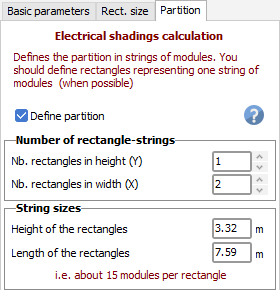
Typical cases
In regular fixed tilt arrays or arrays of trackers, for minimizing the electrical losses you should ideally gather all the modules of a string in a same row within a table, to ensure that all modules operate in the same conditions. The width of this "rectangle-string" will therefore be the width of the PV module in landscape, or its length in portrait. Defining 2 rows (for example U-cabling) may produce a little bit more shading loss when the modules are positioned in landscape. In portrait orientation this type of cabling may however be advantageous (see below).
Many systems are now defined by little tables (of less than about 10 modules in width), often imported from other CAD software, and often positioned on a hill, following the terrain.
•If all the modules are connected to the same string, the string partition is one rectangle in both sizes (i.e. 1 x 1).
•If the bottom and the top row of each table are connected to two different strings, you should split your table into 2 rectangles-strings.
One may worry that the string being laid-out over multiple tables would lead to problems with the partitioning. However, you shouldn't worry about the calculation: if your tables are positioned in rows, side-by-side on the terrain, defining one little part of the string in each table will be equivalent as defining a full string in a wide table. All the bottoms will be shaded at the same time, and the rest of the table will become inactive, in the same way as for a big table with multiple strings.
For Twin half-cut cells modules, the ideal is to put them in portrait. In this case you can define a rectangle of half the length of the module. In landscape, such a module will behave exactly like a normal module: there is no specific benefit for the electrical shading loss from the cell layout.
NB: there is no simple way to define partitions for Twin half-cut cells module strings spread on several rows on the table: in this case the best course of action is to use the Module Layout option.
In the specific case of single-string inverters, or whenever all the strings (laid-out on one row) on a given MPPT input are shaded in the exact same way, modules in landscape orientation will suffer less from shadings than in the case of a central inverter. This is the case both for half-cut or standard cell modules (with three sub-modules in general). When shading the bottom row of cells, the loss of production will only be of about one third on clear-sky conditions, due to modules having three sub-modules in the height of the partition. Once all effects are taken into account, it was found that these strings are best modeled with two partitions per row of modules.
When connected to string optimizers, whether or not multiple strings are put in parallel with each other on the same MPPT, these will usually behave as in the string inverter case (see above). For modules in landscape, strings on a single row, the best model is two partitions per row of modules.
Some people define each rectangle-strings as one only module. This is not the right way, except when you are using an optimizer on each module.
If the optimizer acts on 2 modules in series, you should define rectangle-strings representing 2 modules.
It is not always possible to define exactly one rectangle for one string. Some strings may have modules irregularly distributed on 2 rows. In some other cases, there is no contiguous and rectangular group of cells acting as a single partition that would turn on or off depending on the shadings.
Remember that this electrical calculation is only an approximation. The particular cases should be calculated using the Module Layout option. The module layout may also serve as a guide to define partitions. In the case of a very large system for example, you can consider a smaller version of the system to calculate the effects of shadings accurately with the module layout, and use these results to properly define the partitions.
Summary for common cases
To summarize the cases above, we identify the configuration of the strings in the following way: Number of rows - Orientation - (optional) U-cabling.
"Number of rows" (marked as an integer number) is the number of rows in the height of the table spanned by all the strings of a given MPPT input. By default we suppose that the strings are laid out on one row. U-cabling (marked as U) is for the case where the strings are laid out over multiple rows in the height of the table. Finally the Orientation may either be L (standard or half-cut modules in landscape), P (standard modules in portrait), or T (half-cut modules in portrait).
Case |
Partitions in height |
Example |
1L |
2 partitions |
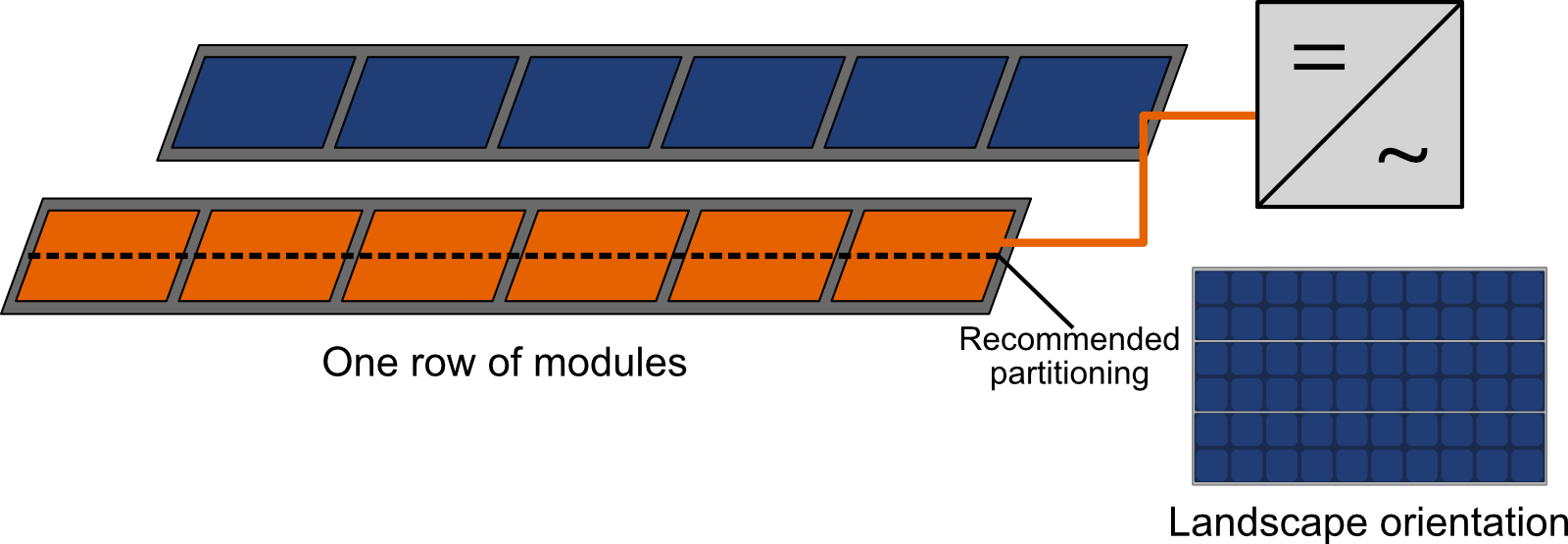 |
xL |
x partitions |
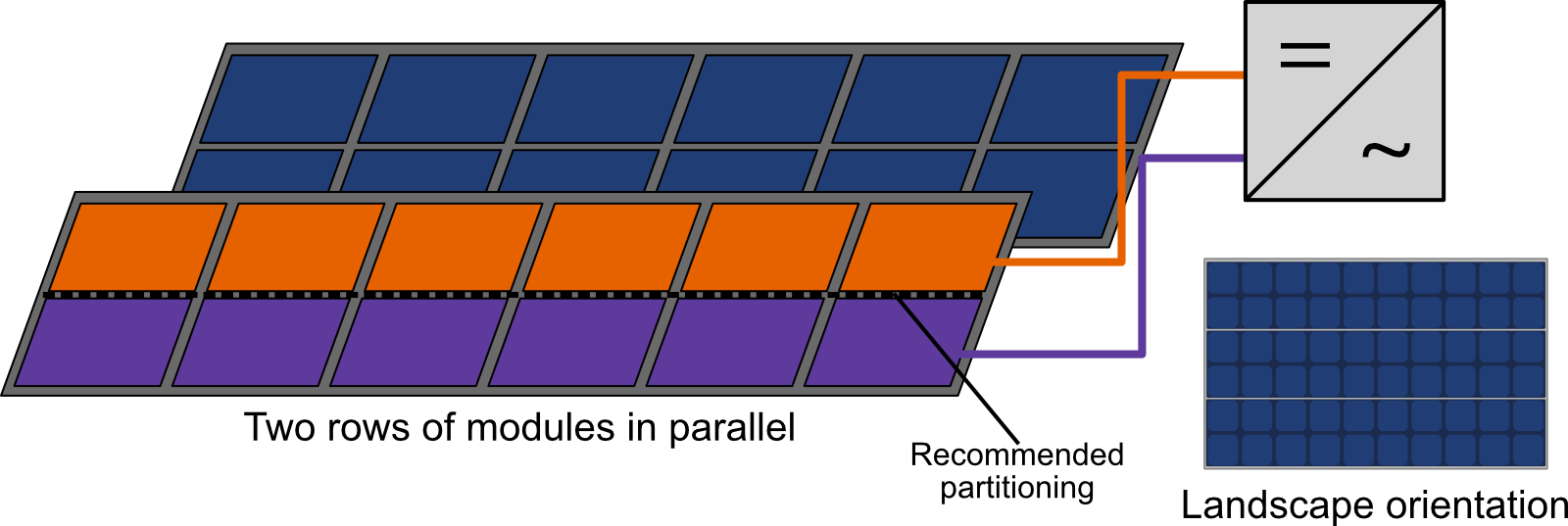 |
xLU |
3x partitions |
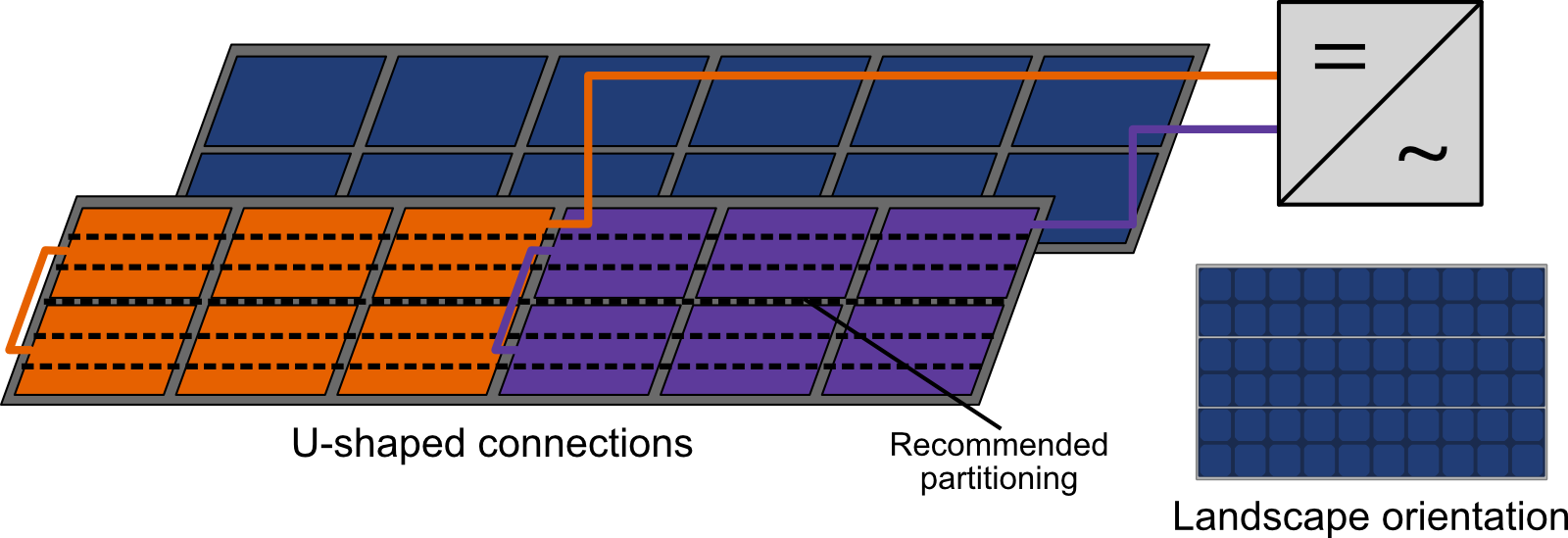 |
xP |
x partitions |
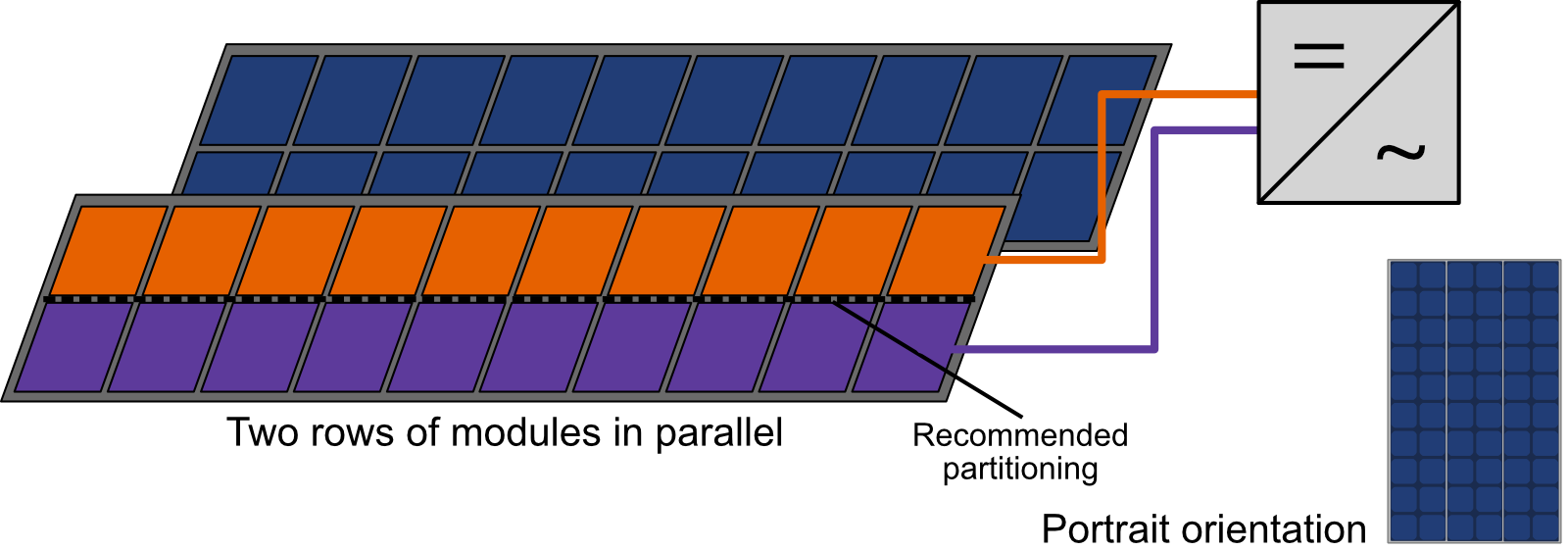 |
xPU |
module layout recommended |
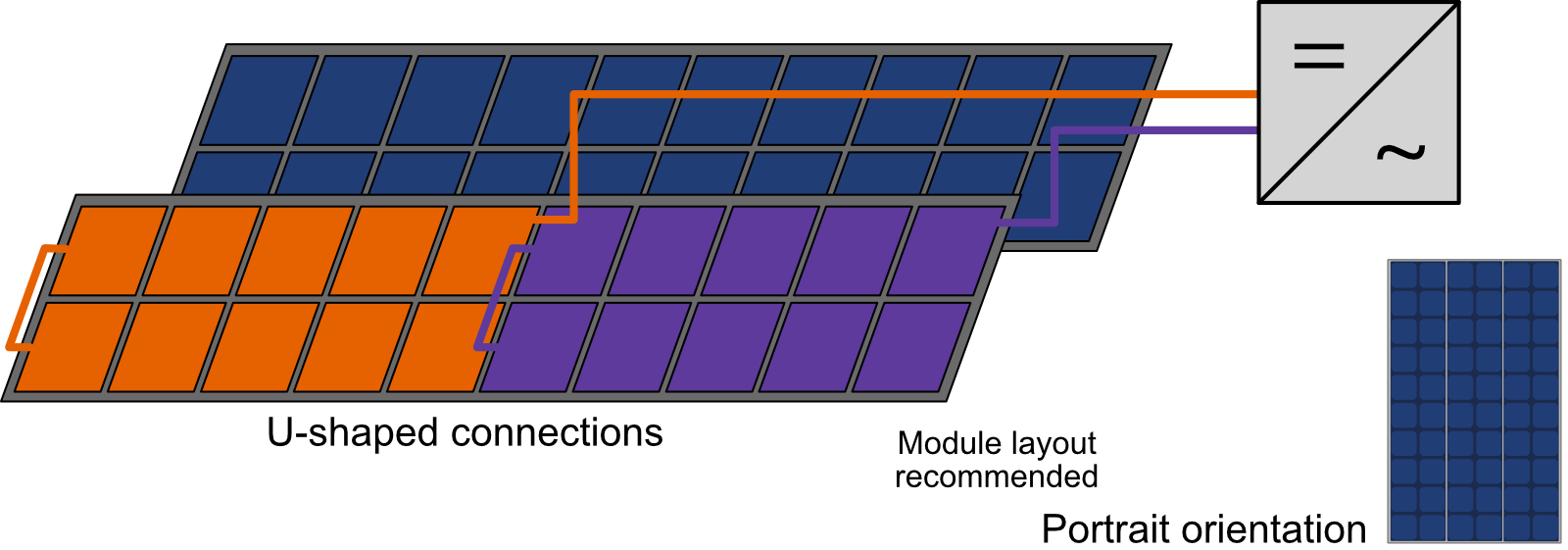 |
xT |
2x partitions |
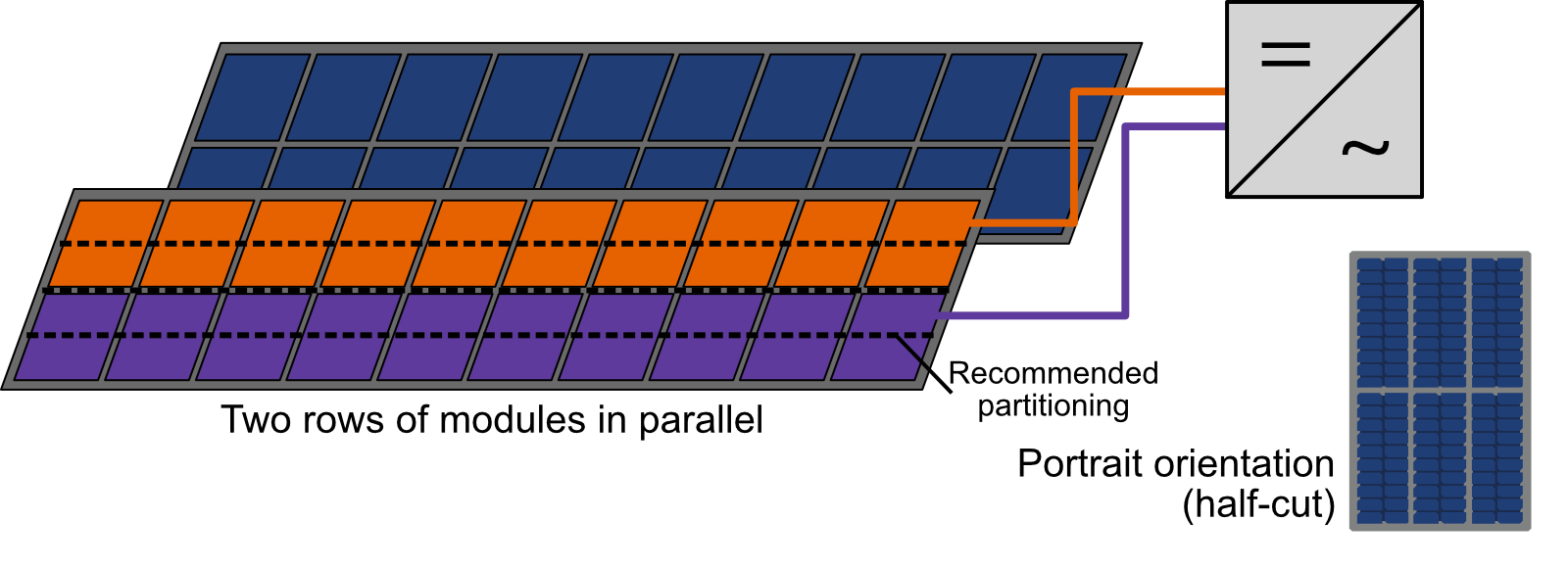 |
xTU |
x partitions |
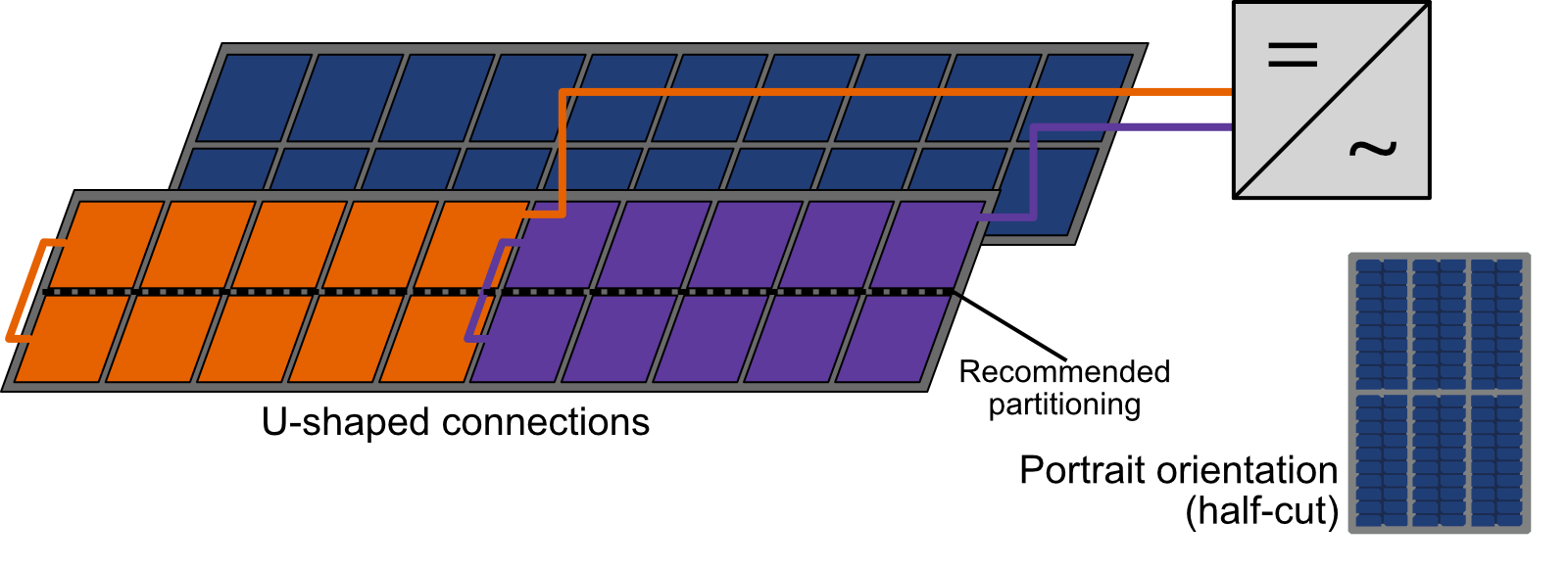 |
Extension of the partitioning to other tables
To proceed with the electrical calculation based on the partitioning in the simulation, the partition has to be defined for each table of the scene.
You can extend the definition of this table to the other tables of the scene.
| - Cancel all partitions | allows to suppress the definitions;.the electrical calculation is no more possible. |
| - The selection of tables | if you have defined a multiple selection in the global 3D scene, you can apply this partition to all selected tables. |
| - All tables of same size | the partition may be specific for a set of identical tables. |
| - All tables of the scene | defines all tables as "Partition defined" (even little tables 1 x 1), extends this choice when possible. |
